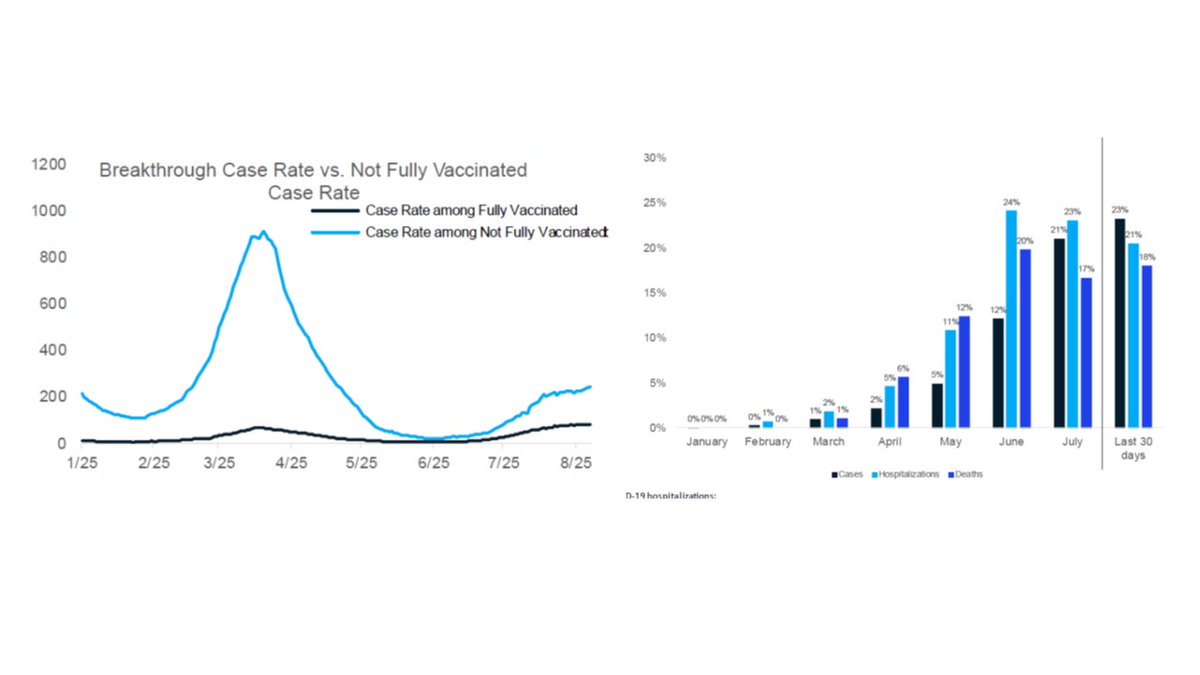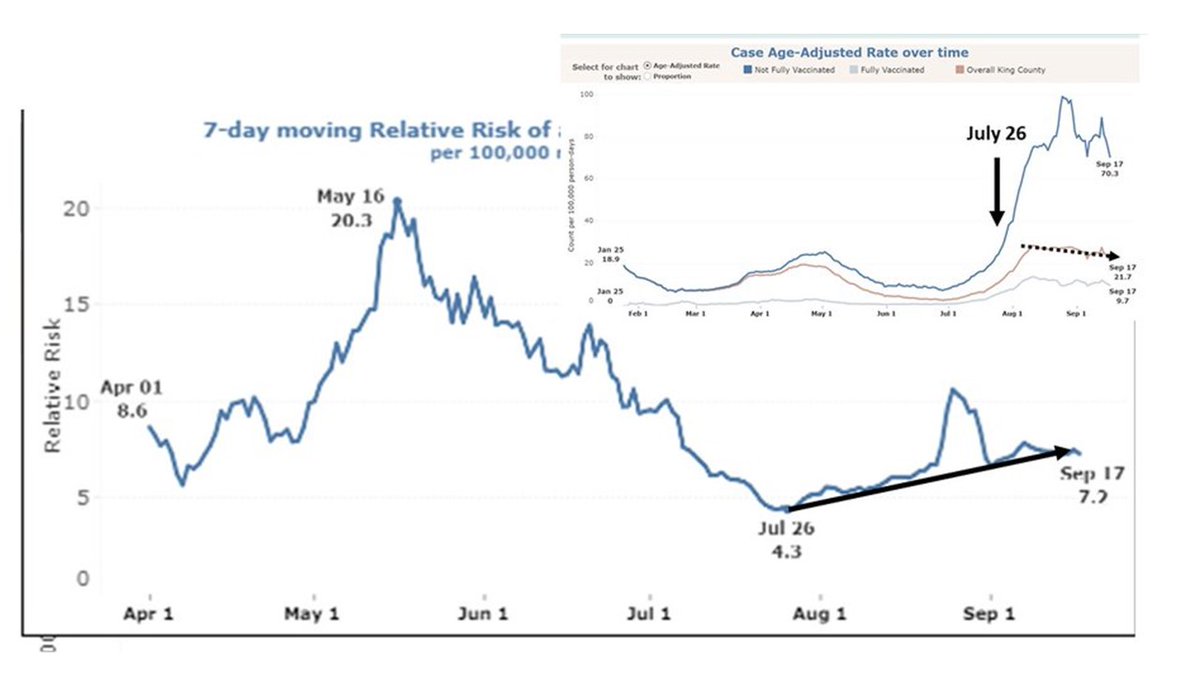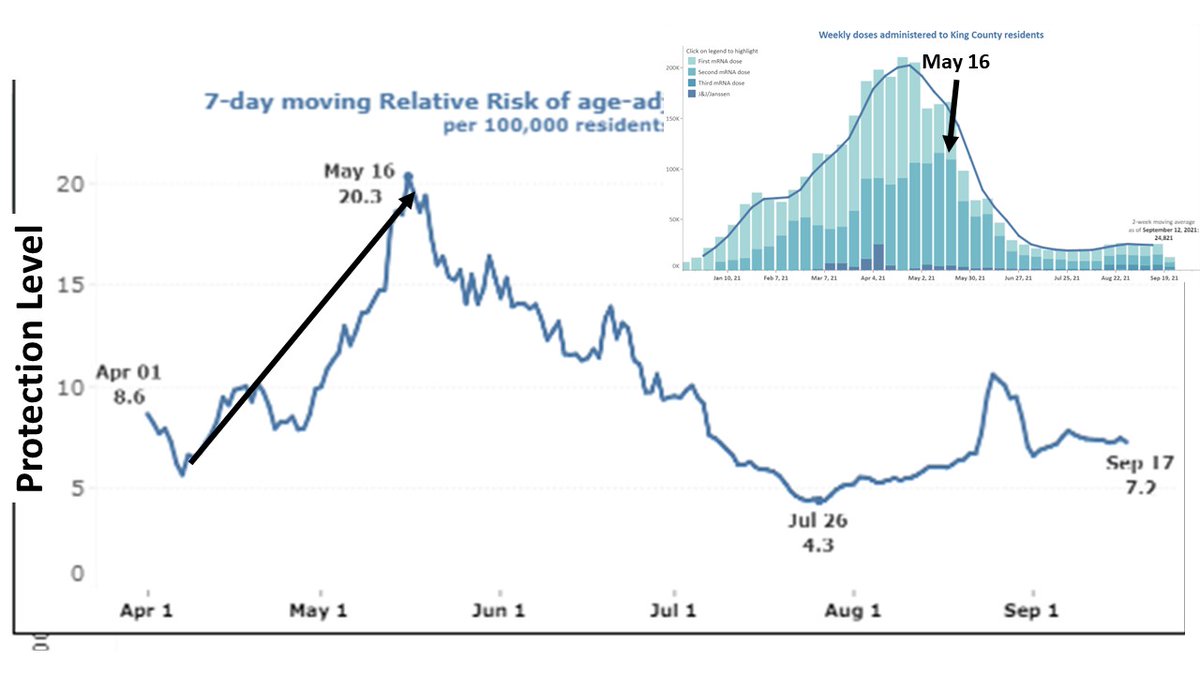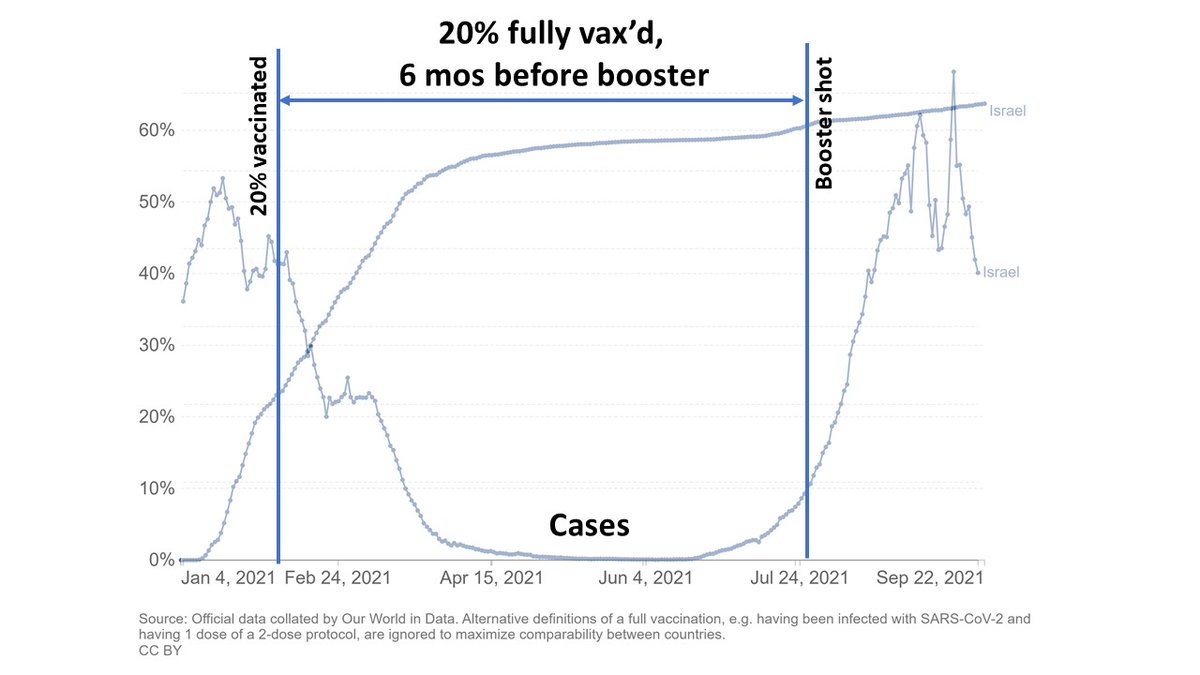
Six months ago, 15% of Americans had been fully vax'd.
How is vaccine effectiveness (VE) holding up? I looked up VE estimates over time, state by state.
Long story short: VE has been remarkably stable over the last 2 months.
If immunity is waning, it's not waning fast.
How is vaccine effectiveness (VE) holding up? I looked up VE estimates over time, state by state.
Long story short: VE has been remarkably stable over the last 2 months.
If immunity is waning, it's not waning fast.
Connecticut: VE 81% on Aug 2, 79% now. portal.ct.gov/-/media/Corona… 

Georgia: can't see the actual numbers, but bars for now vs July 26 look pretty similar.
dph.georgia.gov/document/docum…
dph.georgia.gov/document/docum…

Nevada: Southern NV Health District suggests VE is roughly stable, w breakthrough cases declining.
covid.southernnevadahealthdistrict.org/cases/
covid.southernnevadahealthdistrict.org/cases/

Oregon: VE not available, but % of cases that are breakthrough was the same July 31 and Sept 11.
(The data from Sept 18 are the one instance of potentially falling VE that I could find - but are just 1 week of data.)
oregon.gov/oha/covid19/Do…
(The data from Sept 18 are the one instance of potentially falling VE that I could find - but are just 1 week of data.)
oregon.gov/oha/covid19/Do…

Rhode Island: only cumulative data available, but slopes look similar over last 2 months.
…through-cases-rihealth.hub.arcgis.com
…through-cases-rihealth.hub.arcgis.com

Tennessee: Percentage of cases that are breakthrough went down between July and Aug.
tn.gov/content/dam/tn…
tn.gov/content/dam/tn…
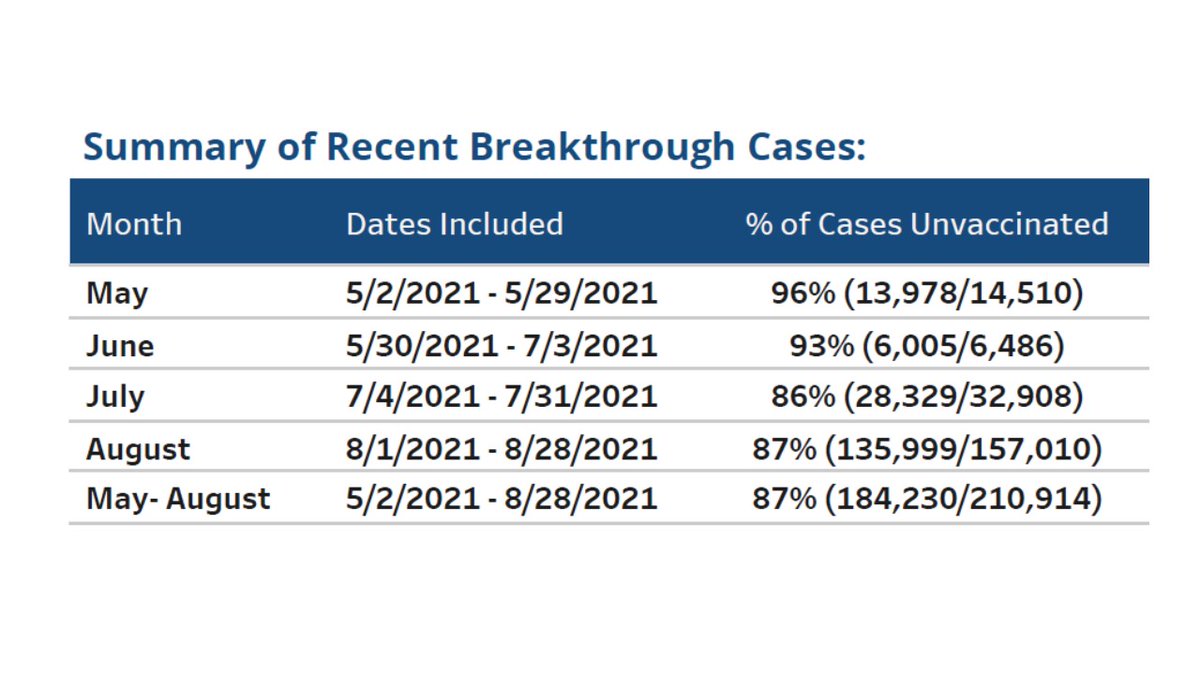
In the end, I couldn't find a single state with clearly falling vax protection from late July to now.
In some states, it was rising.
(And VE vs hospitalization was much higher than the estimates vs infection shown above.)
If immunity is waning in the US, it's not waning fast.
In some states, it was rising.
(And VE vs hospitalization was much higher than the estimates vs infection shown above.)
If immunity is waning in the US, it's not waning fast.
• • •
Missing some Tweet in this thread? You can try to
force a refresh






